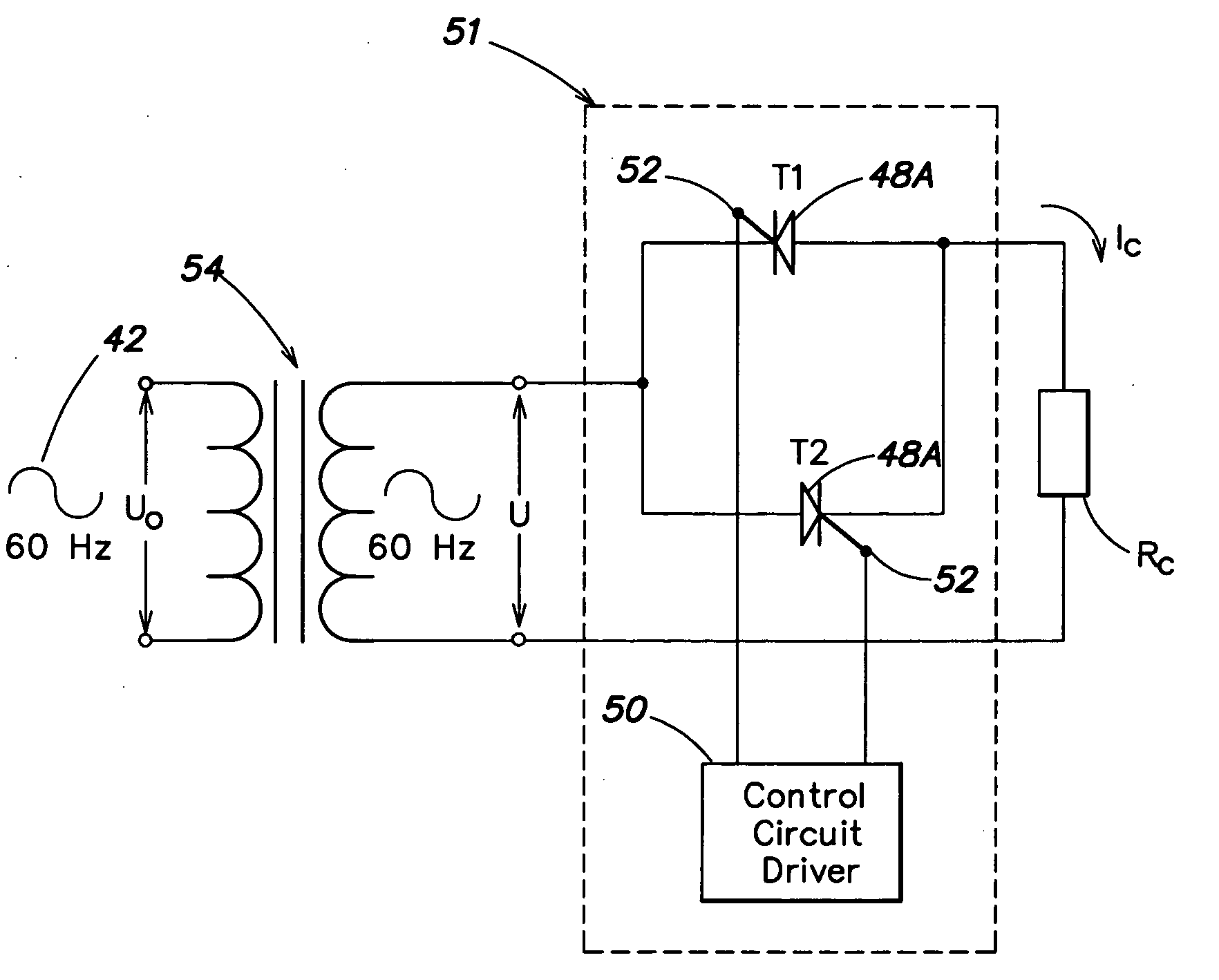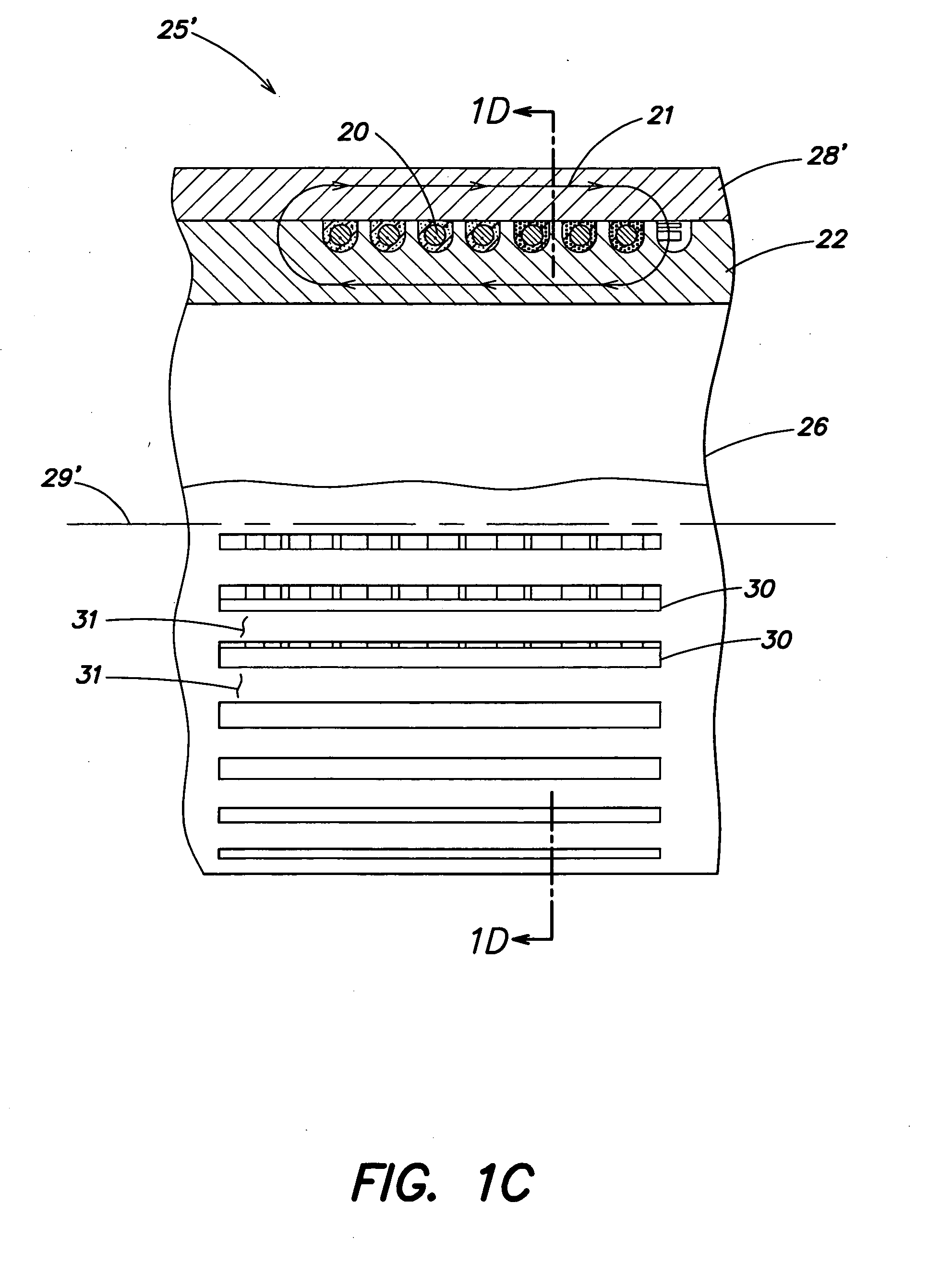Heating systems and methods
- Summary
- Abstract
- Description
- Claims
- Application Information
AI Technical Summary
Benefits of technology
Problems solved by technology
Method used
Image
Examples
second embodiment
a similar heating system is shown in FIGS. 1C-1D. This modified system 25′ includes a modified yoke 28′ having elongated hollow portions or slots 30, and between the slots, elongated solid portions or ribs 31; the slots 30 and ribs 31 are disposed substantially parallel to the core / yoke center line 29′. The slots 30 are at right angles to the loops of coil 20 wrapped around core 22. The slots 30, which are effectively air gaps, create discontinuities or restrictions in the eddy currents 32 within the yoke 28′, as shown in FIG. 1D (a sectional view taken along section line 1D-1D in FIG. 1C). In contrast, there are no slots in core 22 restricting the eddy currents 33 in the core 22. This arrangement results in preferential inductive heating in the core 22, rather than the yoke 28′; this is desirable when the ultimate article to be heated is a material in the passage 26 of the core 22. Thus, a greater percentage of the power delivered to the heating system is transmitted to the article...
PUM
| Property | Measurement | Unit |
|---|---|---|
| Fraction | aaaaa | aaaaa |
| Fraction | aaaaa | aaaaa |
| Fraction | aaaaa | aaaaa |
Abstract
Description
Claims
Application Information
 Login to View More
Login to View More - R&D
- Intellectual Property
- Life Sciences
- Materials
- Tech Scout
- Unparalleled Data Quality
- Higher Quality Content
- 60% Fewer Hallucinations
Browse by: Latest US Patents, China's latest patents, Technical Efficacy Thesaurus, Application Domain, Technology Topic, Popular Technical Reports.
© 2025 PatSnap. All rights reserved.Legal|Privacy policy|Modern Slavery Act Transparency Statement|Sitemap|About US| Contact US: help@patsnap.com



